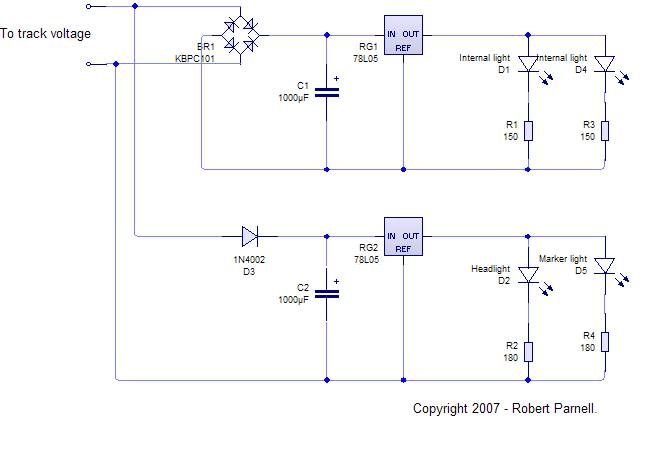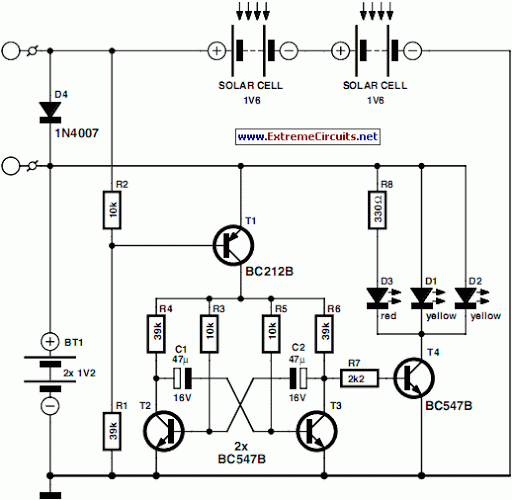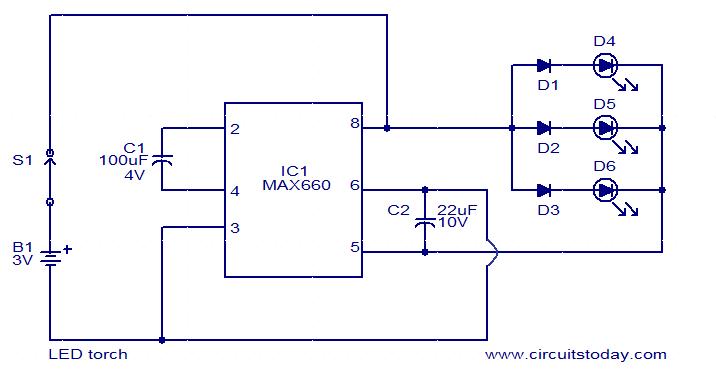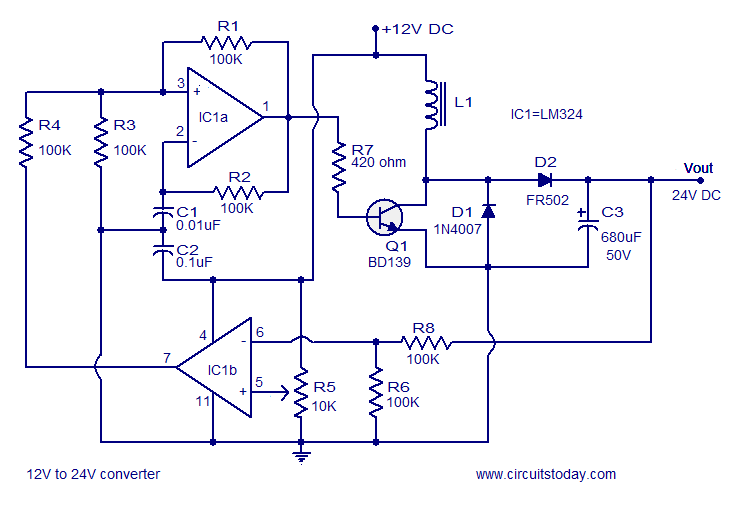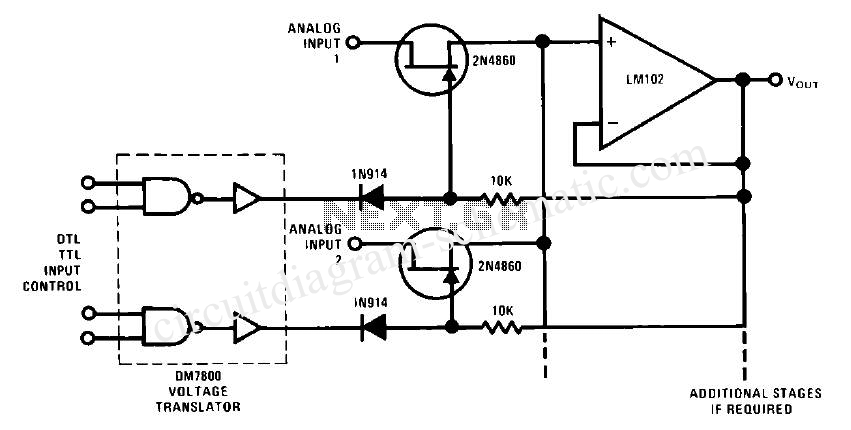
12V White LED Driver
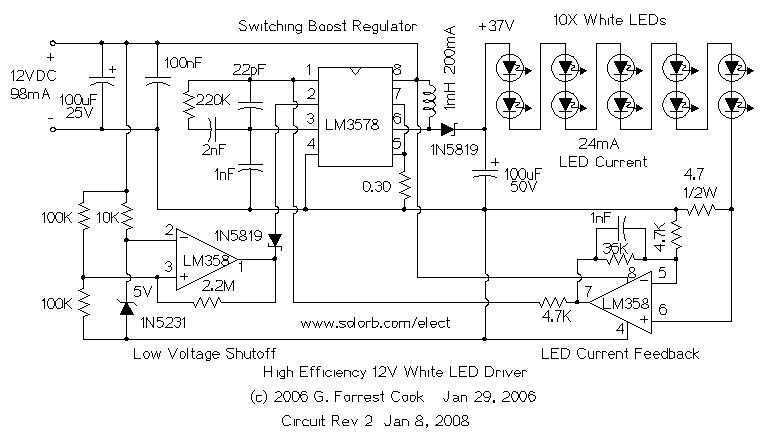
The heart of the circuit is a string of 10 white LEDs. These are wired in series and connected to a current-regulated step-up switching power supply circuit. DC powered LED lighting circuits can vary from the trivial, with a single LED and a series resistor, to more complicated switching power supply circuits such as this project. There is a tradeoff between simplicity and circuit capabilities. This more complex circuit adds features such as a regulated light level and automatic circuit shutoff on low input voltage. The circuit also protects the LEDs from too much current when the supply rises above 12V. More: By using a high frequency switching regulator, the power loss associated with the current dropping resistors found in simpler circuits is eliminated. This offsets the power consumed by the extra active parts. This circuit can power 10 white LEDs at 24mA.
The circuit design consists of a series connection of 10 white LEDs, which are typically rated for a forward voltage drop of approximately 3V each. This results in a total forward voltage requirement of around 30V when all LEDs are illuminated at their nominal current of 24mA. To achieve this voltage while maintaining efficiency, a step-up (boost) switching power supply is employed.
The power supply circuit utilizes a high-frequency switching regulator, which significantly minimizes power loss compared to traditional linear regulators or simple resistor-based current limiting methods. This is accomplished by rapidly switching the input voltage on and off, allowing the circuit to store energy in an inductor and release it at a higher voltage level.
In addition to providing the necessary voltage, the circuit includes current regulation features to ensure that the LEDs operate within their safe current limits. This is crucial for preventing thermal runaway and prolonging the lifespan of the LEDs. The current regulation is typically achieved through feedback mechanisms that monitor the output current and adjust the duty cycle of the switching regulator accordingly.
Moreover, an automatic shutoff feature is integrated into the circuit to protect the LEDs from excessive current in scenarios where the input voltage exceeds 12V. This is important for maintaining the integrity of the LED array and preventing potential damage from overcurrent conditions.
Overall, this circuit design exemplifies a balance between complexity and performance, offering enhanced control over light output and reliability while efficiently powering a string of LEDs.The heart of the circuit is a string of 10 white LEDs. These are wired in series and connected to a current-regulated step-up switching power supply circuit. DC powered LED lighting circuits can vary from the trivial, with a single LED and a series resistor, to more complicated switching power supply circuits such as this project.
There is a tradeoff between simplicity and circuit capabilities. This more complex circuit adds features such as a regulated light level and automatic circuit shutoff on low input voltage. The circuit also protects the LEDs from too much current when the supply rises above 12V. By using a high frequency switching regulator, the power loss associated with the current dropping resistors found in simpler circuits is eliminated. This offsets the power consumed by the extra active parts. This circuit can power 10 white LEDs at 24mA o 🔗 External reference
The circuit design consists of a series connection of 10 white LEDs, which are typically rated for a forward voltage drop of approximately 3V each. This results in a total forward voltage requirement of around 30V when all LEDs are illuminated at their nominal current of 24mA. To achieve this voltage while maintaining efficiency, a step-up (boost) switching power supply is employed.
The power supply circuit utilizes a high-frequency switching regulator, which significantly minimizes power loss compared to traditional linear regulators or simple resistor-based current limiting methods. This is accomplished by rapidly switching the input voltage on and off, allowing the circuit to store energy in an inductor and release it at a higher voltage level.
In addition to providing the necessary voltage, the circuit includes current regulation features to ensure that the LEDs operate within their safe current limits. This is crucial for preventing thermal runaway and prolonging the lifespan of the LEDs. The current regulation is typically achieved through feedback mechanisms that monitor the output current and adjust the duty cycle of the switching regulator accordingly.
Moreover, an automatic shutoff feature is integrated into the circuit to protect the LEDs from excessive current in scenarios where the input voltage exceeds 12V. This is important for maintaining the integrity of the LED array and preventing potential damage from overcurrent conditions.
Overall, this circuit design exemplifies a balance between complexity and performance, offering enhanced control over light output and reliability while efficiently powering a string of LEDs.The heart of the circuit is a string of 10 white LEDs. These are wired in series and connected to a current-regulated step-up switching power supply circuit. DC powered LED lighting circuits can vary from the trivial, with a single LED and a series resistor, to more complicated switching power supply circuits such as this project.
There is a tradeoff between simplicity and circuit capabilities. This more complex circuit adds features such as a regulated light level and automatic circuit shutoff on low input voltage. The circuit also protects the LEDs from too much current when the supply rises above 12V. By using a high frequency switching regulator, the power loss associated with the current dropping resistors found in simpler circuits is eliminated. This offsets the power consumed by the extra active parts. This circuit can power 10 white LEDs at 24mA o 🔗 External reference
